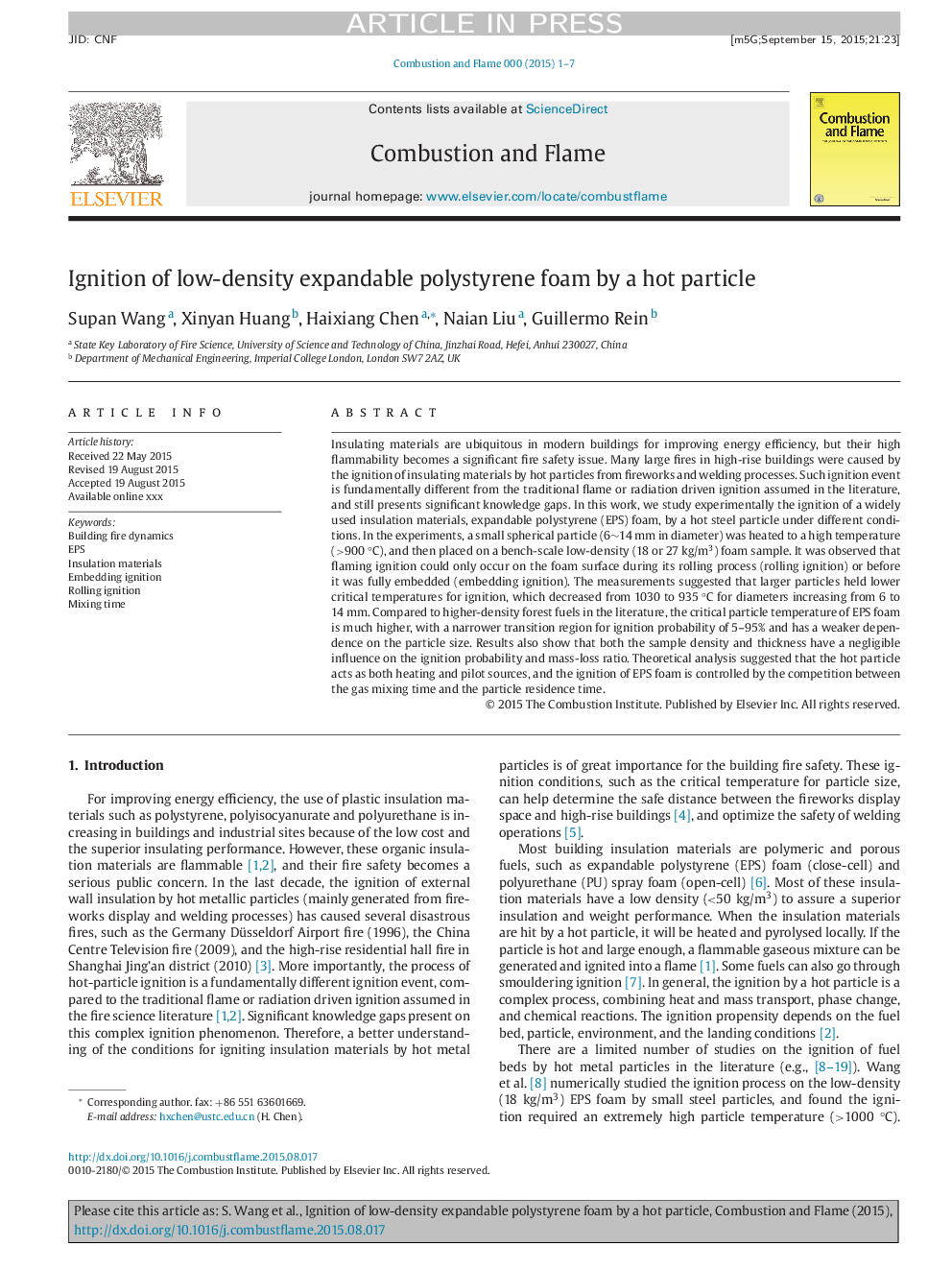| کد مقاله | کد نشریه | سال انتشار | مقاله انگلیسی | نسخه تمام متن |
|---|---|---|---|---|
| 10264357 | 457804 | 2015 | 7 صفحه PDF | دانلود رایگان |
عنوان انگلیسی مقاله ISI
Ignition of low-density expandable polystyrene foam by a hot particle
ترجمه فارسی عنوان
جرقه فوم پلی استایرن قابل انعطاف با چگالی کم با یک ذره داغ
دانلود مقاله + سفارش ترجمه
دانلود مقاله ISI انگلیسی
رایگان برای ایرانیان
موضوعات مرتبط
مهندسی و علوم پایه
مهندسی شیمی
مهندسی شیمی (عمومی)
چکیده انگلیسی
Insulating materials are ubiquitous in modern buildings for improving energy efficiency, but their high flammability becomes a significant fire safety issue. Many large fires in high-rise buildings were caused by the ignition of insulating materials by hot particles from fireworks and welding processes. Such ignition event is fundamentally different from the traditional flame or radiation driven ignition assumed in the literature, and still presents significant knowledge gaps. In this work, we study experimentally the ignition of a widely used insulation materials, expandable polystyrene (EPS) foam, by a hot steel particle under different conditions. In the experiments, a small spherical particle (6â¼14 mm in diameter) was heated to a high temperature (>900 °C), and then placed on a bench-scale low-density (18 or 27 kg/m3) foam sample. It was observed that flaming ignition could only occur on the foam surface during its rolling process (rolling ignition) or before it was fully embedded (embedding ignition). The measurements suggested that larger particles held lower critical temperatures for ignition, which decreased from 1030 to 935 °C for diameters increasing from 6 to 14 mm. Compared to higher-density forest fuels in the literature, the critical particle temperature of EPS foam is much higher, with a narrower transition region for ignition probability of 5-95% and has a weaker dependence on the particle size. Results also show that both the sample density and thickness have a negligible influence on the ignition probability and mass-loss ratio. Theoretical analysis suggested that the hot particle acts as both heating and pilot sources, and the ignition of EPS foam is controlled by the competition between the gas mixing time and the particle residence time.
ناشر
Database: Elsevier - ScienceDirect (ساینس دایرکت)
Journal: Combustion and Flame - Volume 162, Issue 11, November 2015, Pages 4112-4118
Journal: Combustion and Flame - Volume 162, Issue 11, November 2015, Pages 4112-4118
نویسندگان
Supan Wang, Xinyan Huang, Haixiang Chen, Naian Liu, Guillermo Rein,
